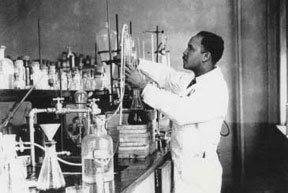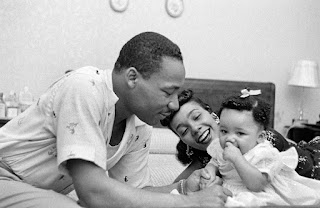 |
| 1867 - Fisk University is Incorporated |
Topics: African Americans, Civil Rights, Education, Human Rights, Women's Rights
Fayetteville State University
Celebrating our Sesquicentennial will be a testament to the tenacity of the spirit of seven black citizens and the black community of Fayetteville who established and supported the Howard School on November 29, 1867 for educating black children.
They would indeed be proud today of the diverse student body and world class accomplishments made by FSU in various fields from teacher education to cyber-security. We will commemorate this transformative experience by proudly "Celebrating 150 Years of Excellence in Preparing Educators, Leaders, and Engaged Citizens" during the 2017-2018 academic year.
1865
In 1865, a "sophisticated" education agenda was already underway in Fayetteville's black community. Blacks citizens in Fayetteville were zealots for education and tried to have a school at Evans Chapel prior to 1865 but had problems with financial stability and space. After a request was made by John Sinclair Leary to the American Missionary Association (AMA) for a teacher, they sent Reverend Dickson whose tenure was cut short by illness.
1866
Robert Harris was named the Superintendent of the AMA school in 1866 and appointed his brother Cicero Harris as his assistant. Robert taught the intermediate level, which he called the Sumner School and assigned Cicero the primary grades, which he called the Phillips School. The curriculum at the schools emphasized fundamentals in reading, writing, practical math, and moral development. However financial stability and space were continuing problems due to the large number of schools the AMA was trying to support as well as the number of children and adults who wanted to be educated in Fayetteville.
1867
Black citizens of Fayetteville decided to establish their own school for the education of their children. They held a meeting at Evans Chapel in November of 1867, and agreed to establish the Howard School, named after General Oliver Otis Howard, Commissioner of the Freedmen's Bureau. They designated David A. Bryant, Nelson Carter, Andrew Jackson Chesnutt, George W. Grange, Sr., Matthew N. Leary, Jr., Thomas Lomax, and Robert H. Simmons, and their successors as Trustees. On November 29, 1867, these seven men signed the deed and paid $136 to Robert Simmons and Henry McNeill for two lots on Gillespie Street so that the Freedmen's Bureau could build a school for the education of black children. Robert Harris became the first Chief Executive Officer of the school when he was designated as Principal of the Howard School. In addition to reading, writing, and math, he expanded the curriculum to include science and geography, trained students to serve as teachers in small rural schools in Cumberland and surrounding counties, and also taught evening and summer school classes, thus greatly increasing the number of blacks receiving an education in the county. The Howard School became the model for graded schools in North Carolina.
Fisk University
Founded in 1866, shortly after the end of the Civil War, Fisk University is a historically black university, and is the oldest institution of higher learning in Nashville, Tennessee. Fisk’s outstanding faculty and students continue to enhance the University’s national reputation for academic excellence, which is validated year after year by the leading third party reviewers, as well as, by the pool of talented applicants and the large percentage of alumni who complete graduate or professional degrees and become leaders and scholars in their fields. From its earliest days, Fisk has played a leadership role in the education of African-Americans. Fisk faculty and alumni have been among America's intellectual, artistic, and civic leaders in every generation since the University's beginnings.
In 1865, barely six months after the end of the Civil War and just two years after the Emancipation Proclamation, three men — John Ogden, the Reverend Erastus Milo Cravath, and the Reverend Edward P. Smith — established the Fisk School in Nashville.
The school was named in honor of General Clinton B. Fisk of the Tennessee Freedmen's Bureau, who provided the new institution with facilities in former Union Army barracks near the present site of Nashville's Union Station. In these facilities Fisk convened its first classes on January 9, 1866. The first students ranged in age from seven to seventy, but shared common experiences of slavery and poverty — and an extraordinary thirst for learning.
1867 - Fisk University is Incorporated
The work of Fisk's founders was sponsored by the American Missionary Association — later part of the United Church of Christ, with which Fisk retains an affiliation today.
Ogden, Cravath, and Smith, along with others in their movement, shared a dream of an educational institution that would be open to all, regardless of race, and that would measure itself by "the highest standards, not of Negro education, but of American education at its best." Their dream was incorporated as Fisk University on August 22, 1867.
Florida A&M University
FAMU’s academic achievements are what set it apart as a unique learning experience. In 2014, FAMU was recognized among the 2014 U.S. News & World Report’s “Best National Universities.” The U.S. News & World Report lists FAMU as the top public historically black college or university in the nation for 2015. It is also listed among The Princeton Review’s “Best in the Southeast” colleges and is one of the top picks for providing a high quality education at an affordable price in Florida, according to The College Database (2013).
FAMU values diversity in thought, perspective, and culture. The University enrolls nearly 10,000 students hailing from across the United States and more than 70 countries, including several African countries, the Bahamas, Brazil, Indonesia, China, and the United Arab Emirates, to name a few. The student body includes representatives from all ethnic, socio-economic, and religious backgrounds.
Florida Agricultural and Mechanical University was founded as the State Normal College for Colored Students, and on October 3, 1887, it began classes with fifteen students and two instructors. Today, FAMU, as it has become affectionately known, is the premiere school among historically black colleges and universities. Prominently located on the highest hill in Florida’s capital city of Tallahassee, Florida A&M University remains the only historically black university in the eleven member State University System of Florida.
In 1884, Thomas Van Renssaler Gibbs, a Duval County educator, was elected to the Florida legislature. Although his political career ended abruptly because of the resurgence of segregation, Representative Gibbs was successful in orchestrating the passage of House Bill 133, in 1884, which established a white normal school in Gainesville, FL, and a colored school in Jacksonville. The bill passed, creating both institutions; however, the stated decided to relocate the colored school to Tallahassee.
Thomas DeSaille Tucker [1887-1901], an attorney from Pensacola, was chosen to be the first president. Former State Representative Gibbs joined Mr. Tucker as the second faculty member. In 1891, the College received $7,500 under the Second Morrill Act for agricultural and mechanical arts education, and the State Normal College for Colored Students became Florida’s land grant institution for colored people. The original College was housed in a single white-framed building and had three departments of study and recreation. At about this time, the College was relocated from its original site on Copeland Street to its present location, and its name was changed to the State Normal and Industrial College for Colored Students.
Florida Memorial University
Florida Memorial University is a private, coeducational, and Baptist-affiliated institution that has the distinction of being one of the oldest academic centers in the state, and the only Historically Black University in South Florida.
In 1879, members of the Bethlehem Baptist Association founded the school, then called Florida Baptist Institute, in Live Oak to create “a College of instruction for our ministers and children.” The Reverend J. L. A. Fish was its first president. Despite a promising start, racial tensions soon cast a shadow over the Institute. In April 1892, after unknown persons fired shots into one of the school’s buildings, then-President Rev. Matthew Gilbert and other staff members fled Live Oak for Jacksonville, where he founded the Florida Baptist Academy in the basement of Bethel Baptist Church. They began holding classes in May 1892, with Sarah Ann Blocker as the main instructor. The school in Live Oak, however, continued to operate even after this splintering.
In 1896, Nathan White Collier was appointed president of the Academy, a post he held for 45 years. President Collier recruited renowned composer and Jacksonville native, J. Rosamond Johnson, to teach music at the school. While in the employ of the Florida Baptist Academy, Rosamond composed music for “Lift Ev’ry Voice and Sing,” a poem written by his brother, James Weldon Johnson, creating the song that has since been enshrined as the “Negro National Anthem.” It was first performed by a choir that included students from Florida Baptist Academy at a celebration of Abraham Lincoln’s birthday in 1900.










